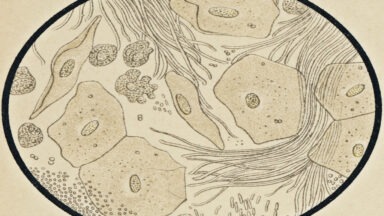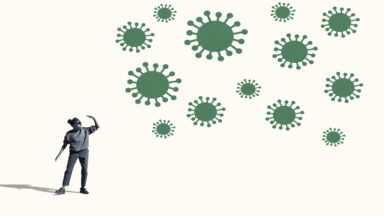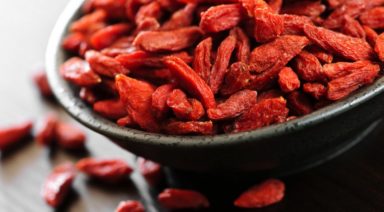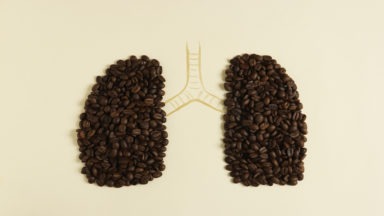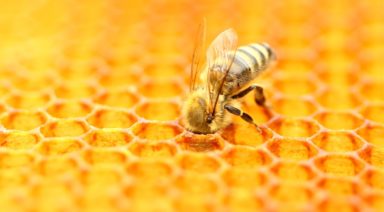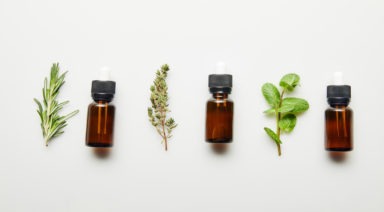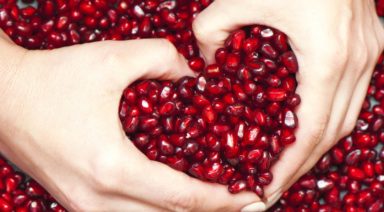Can Holistic Health Care Give Your Pet a Longer, Healthier Life?

“Until one has loved an animal, a part of one’s soul remains unawakened.” ― Anatole France
The Latin root word of “animal” is anima, or meaning soul. Countless pet owners confirm profound soul connections with their dogs and cats, but for many, the downside of pet ownership is that canines and felines just don’t live long enough — humans outlive their fur babies by decades.
We love our pets — as of 2017, almost half of U.S. households had dogs, and 38 percent had cats. If they are free of serious illness, dogs typically live for eight to 15 years. Cats live only four to five years in the wild, but up to 18 to 20 in captivity. Fortunately, we can improve the odds of our pets living longer, healthier lives.
A Pet’s Biggest Enemy: Cancer
The suggestions below may help protect your pet from cancer. Statistically, 12 million cats and dogs (or more) will develop cancer in 2019. Many veterinarians consider canine and feline cancer to be epidemic. Pets have cancer for the same reasons we do — poor diets of processed foods and inadequate nutrition along with exposure to environmental toxins. While our pets avoid the dangers of tobacco and alcohol, growing evidence demonstrates that they are over-vaccinated. “Dogs Naturally” magazine reports that over-vaccinated dogs and cats are at higher risk for lifelong chronic illness such as diabetes, autoimmune disease, and cancer.
Read on for steps to support a long, healthy life for your pet.

-
Rethink your pet’s diet.
Humans and dogs share roughly 75 percent of genetic material; essentially, we’re both opportunistic predators. Like us, our pet’s health can suffer from a processed food diet. Mammals are designed to thrive on fresh, whole food. Commercial diets, likened to “fast food” for pets, include dubious protein from sources such as diseased animals, as well as grains, especially corn, which is never a natural part of any canine or feline diet. Any commercial pet food formulated for maximum profit will generally include cheap ingredients, slaughterhouse byproducts, and sweeteners, chemical preservatives, and additives.
Healthy pets have healthy diets — and it’s important to know whether our dogs and cats have food intolerances and allergies. By providing prepared meals, or at minimum, holistic, grain-free commercial foods, we can begin to take control of our pet’s health.
Greens!
Adding leafy greens such as spinach, chard, or kale to your pet’s diet can help. A Purdue University study showed a 90 percent decrease in cancer risk when leafy vegetables were added to processed food at least three times a week.
There are many potential benefits to an organic pet diet, including reduced food allergies, elimination of fillers and by-products, such as gluten or slaughterhouse waste, fewer intestinal and digestive problems, and potentially, longer life expectancies.
Raw diets — yay or nay?
Raw food provokes love/hate reactions throughout the pet care industry. That said, a trial comparing raw and dry, processed food found that dogs fed a raw diet had, “improved coat condition, better muscle tone, better dental health, improved kidney health and reduced kidney disease.” Those opposed to raw food diets say both humans and pets are at increased risk for bacterial illnesses such as salmonella. But other studies show that pet diets, including raw and homemade, grain-free foods, promote better health.
While the raw food debate continues, pet owners can use common sense when it comes to diet. Ask yourself, when considering ingredients, “would that be good for me?” If the answer is “no,” it won’t be good for your pet either.
Think about cooking for your pet. An online search will return hundreds of dog and cat food recipes. Just avoid grains.
NOTE: Many human foods are toxic to dogs and/or cats. Never feed a dog or cat xylitol in any form, and check labels to be sure xylitol is not an ingredient in foods like peanut butter. While it’s great for humans, this sugar substitute is lethal for dogs and cats. If you use mints or gum sweetened with xylitol, keep them well out of reach of pets.
According to the American Society for the Prevention of Cruelty to Animals (ASPCA), other foods to avoid are chocolate, avocado, wild, unknown mushrooms, rhubarb, nuts, grapes and raisins, citrus fruits, apple seeds (contain a form of cyanide), caffeine in any form, milk and dairy foods, and alcohol.

2. Give Them an Advantage with Supplements.
In the last decade, pet supplements and vitamins have sprung up like mushrooms after rain. Some in the pet industry foisted unnecessary or questionable products on well-meaning pet owners, while others created research-based supplements proven to be beneficial. Again, it’s up to pet owners, but below are some supplements known to support and improve canine and feline health.
Phytoplankton
For years, fish oils have been recommended for pets, but canine and feline nutritionists are changing their minds on this. Because fish oils are heat treated, there may be oxidation, which can cause inflammation, defeating the original purpose of adding fish oil to a pet’s diet.
A fantastic option, pure marine phytoplankton, is rich in dismutase, a powerful antioxidant. It’s also a source of omega-3 fatty acid, amino acids, chlorophyll, protein, vitamins, and trace minerals. It’s great for humans as well.
Probiotics
Just like us, dogs and cats need probiotics for optimal gut health. In the wild, predators ingest live probiotic cultures from their diet of prey animals as well as ingested soil. Without a source of live dietary probiotics, pets can develop gut issues such as diarrhea, constipation, and “scooting” (usually caused by itchy anal glands), and reduced immune function. Gut imbalances can also lead to low energy, skin problems such as itching and hot spots, and poor nutrient absorption.
Carbon 60, a.k.a. C60
C60 is believed to be the most efficient free-radical scavenger known. Made up of unusual carbon molecules called fullerenes, C60 is an inert, non-toxic antioxidant.
Fullerenes were discovered at Sussex University in England. The researchers, Harry Kroto, Robert Curl, and Richard Smalley (Rice University) were awarded the 1996 Nobel Prize for their discovery. They named the molecule “Buckminsterfullerene” after Buckminster Fuller, inventor of the geodesic dome, because of its geometric, cage-like structure. Think of a hollow soccer ball.
The fullerene has properties that make it an excellent industrial lubricant, but research chemists wanted to ascertain the molecule’s toxicity. In animal tests, rats given C60 in an oil medium unexpectedly outlived the control groups, some doubling normal life spans.
This startling discovery led to further investigation; scholarly articles, as well as anecdotal reports, indicated that C60, when ingested in an olive oil medium, improves longevity, kills viruses and bacteria, defends the body against free radicals to reduce inflammation, prevents osteoarthritis, and protects the nerves, heart and liver in both animals and humans. Enough said.
Agaricus blazei Mushrooms
Native to Brazil, the Agaricus blazei mushroom strain is cultivated in Japan for use in human and pet dietary supplements. With 100-plus Blazei-derived supplements on the market, the Japanese consume 15 to 20 tons of the mushroom annually.
The Blazei strain was first documented in a mountain region near Sao Paulo, Brazil. The locals call this strain “cogumelo da vida” and “cogumelo de deus,” respectively, mushroom of life and mushroom of the gods. The region boasts a population of long-lived natives with unusually low levels of geriatric diseases, i.e., Alzheimer’s, Parkinson’s disease, and cancer that drew the attention of researchers who linked their longevity to this local mushroom strain.
This strain has undergone intensive, world-wide research. Studies show that the mushroom has “immunomodulator” properties, meaning that the polysaccharides in this variety allow the immune system to adjust to immune challenges of all types.

3. Use Natural Flea and Tick Defense Tactics
Mainstream flea and tick medications are essentially chemical pesticides — no better for our pets than they are for us. Pyrethrins and pyrethroids are used in spot-on (skin delivery) products, but according to the center for public integrity, products containing these chemicals account for more than half the reported adverse reactions to flea and tick medications.
Another chemical, Fipronil, potentially causes thyroid and nervous system toxicity. Another draw-back: when exposed to light, this chemical morphs into a molecule 10 times more toxic. Pets exposed to these products must be kept out of the sun.
Imidacloprid, found in flea and tick products, is an insect neurotoxin. Research results cited liver toxicity, thyroid lesions, high cholesterol, and birth defects in dogs. This is sobering news for pet parents. The good news is that fleas and ticks can be controlled with non-toxic methods.
Diatomaceous earth is a fine powder that can be dusted into your pet’s coat, bed, and on carpets and floors. The tiny particles, covered with razor-sharp edges, are known to kill bugs by essentially shredding and dehydrating them from the inside out. Because diatomaceous earth is inert, fleas cannot develop resistance.
Ticks hate cedar oil — specifically, natural Texas cedar oil. The Tickshield formula sends ticks looking for friendlier prey and protects from mosquitos, fleas, mites, ants, chiggers, and bed bugs. Environmentally safe, Tickshield can be used by humans too.
Essential oils can protect from fleas and ticks as well. Geranium, lemon eucalyptus, lavender, peppermint, and rosemary provide protection. If you find fleas on your pet, try a rosemary flea bath. Boil three cups of chopped, fresh rosemary (two cups for smaller dogs) in four cups of water for at least 30 minutes. Strain and cool (now’s a good time to add essential oil if you wish). Add to a gallon of warm water — two gallons if you used three cups of rosemary — and soak your dog from nose to tail. Don’t rinse. Allow your fur baby to air dry. Do not use rosemary on cats.
4. Avoid Unnecessary Vaccination
As pet owners, we’re inclined to do what our veterinarian recommends: vaccination at eight, 12, 16, and 24 months, followed by additional vaccination every one to two years, according to the American Kennel Club (AKC).
But consider this: According to veterinary immunologists Ronald Schultz, Ph.D, and Tom Phillips, Ph.D, “A practice that was started many years ago and that lacks scientific validity or verification is annual revaccination. There is no immunologic requirement for annual re-vaccination.
“Immunity to viruses persists for years or for the life of the animal, and revaccination fails to stimulate an anamnestic (secondary) response. The practice of annual vaccination, in our opinion, should be considered of questionable efficacy.”
This was in 1992. The author of the article, veterinarian Will Falconer, goes on to state, “If you have a vaccinated animal, I advise not re-vaccinating.”
The authors of the study go on to say, once vaccinations for diseases like distemper and parvovirus are given, an animal has lifetime immunity. As a compromise, the American Veterinary Medicine Association (AVMA) changed standard re-vaccination schedules from yearly to every three years, but many believe this is still too much.

This is frustrating to pet parents who want to minimize their fur babies’ exposure to vaccines, because the AVMA policies are generally adopted into law at state and local levels. This means owners are legally required to observe vaccination schedules and may be hounded (no pun intended) by their vets to revaccinate.
One answer is titering, a test that determines your pet’s antibodies, or resistance, to disease. Veterinarians have access to two titering methods: TiterCHECK and VacciCheck. If a pet still has disease antibodies, the owner is not legally obligated to re-vaccinate.
Puppies
Puppy vaccines are controversial. Current protocols introduce vaccines that include preservatives, MSG, aluminum, and formaldehyde to very young animals with developing immune systems. Some believe puppy over-vaccination is the primary cause of later autoimmune disease, cancer, and joint disease.
Schultz, the immunologist quoted above, recommends a “minimal vaccine program that includes one parvo, one distemper, and one adenovirus only, given at 16 weeks.” He adds vaccines given at 16 weeks are more effective than those given at 12 weeks and earlier, and these 16-week vaccines are one time only.
You may be giving your puppy or kitten a lifelong advantage by supporting its immune system prior to vaccination. Here’s how: Colostrum supplementation supports immune function in young and older animals, and is an extra “layer” of protection prior to vaccination.
Young mammals receive colostrum in the mother’s first milk after birth. Filled with peptides and immunoglobulins, colostrum supports a puppy or kitten’s “adaptive” immune system. This is nature’s way to protect young canines and felines from environmental pathogens. A little extra colostrum is added insurance that a young animal’s adaptive immune system develops properly.
If, after a vaccine, a pet shows signs of distress such as paralysis, unusual fatigue, pain, fever, or loss of appetite, homeopathic thuja 30X strength is administered by homeopaths and holistic vets with good results.
While these choices and decisions are up to pet parents, there’s no such thing as too much information when it comes to vaccination.
5. Find a Holistic Veterinarian
The American Holistic Veterinary Medical Association (AHVMA) is committed to gentle, minimally invasive animal healthcare that emphasizes patient well-being and comfort. A good holistic vet is able to determine a combination of alternative and conventional (if needed) treatment for your furbaby. This holistic system of animal care searches for cause of disease rather than simply symptom treatment.
A holistic vet may be trained in animal acupuncture and acupressure, herbal medicine, preventative nutrition, homeopathy, reiki, laser therapy — even animal chiropractic. If you choose a holistic vet, it’s likely you’ll find a sympathetic ally in regard to minimal vaccination protocols.
Several holistic veterinary schools have been accredited in the last two decades as more and more vets integrate holistic complementary methods into their practices. The AHVMA offers a “Find a Vet” search function to find a holistic veterinary practice in your area.
BONUS: NATURAL PET FIRST AID KIT
Along with the traditional bandages, scissors, tape, etc., add the following to your pet first aid kit.
Rescue Remedy for Pets: Use this anytime a pet is in distress from thunderstorms, travel, vet office visits, or any anxiety-provoking experience.
Colloidal Silver: This water-like solution, with suspended microscopic silver particles, acts as an internal and external anti-microbial. Deemed safe by holistic veterinarians, colloidal silver can also be used as a soothing anti-inflammatory for wounds, burns, skin infections, hotspots, itchy butts, and allergic reactions. Feline mouth ulcers can be bathed in colloidal silver, and the watery, odorless solution can be dropped in sore eyes. Infected ears would ideally be treated by a vet, but colloidal silver can relieve discomfort and itching during treatment.
Homeopathic Thuja: If a pet shows signs of vaccinosis, or illness after vaccination, homeopathic thuja at a 30X strength can relieve or stop symptoms. An animal may show signs of vaccinosis with swelling and sensitivity at the injection site, poor appetite, fatigue, sneezing, coughing, or runny nose, partial paralysis, vomiting, spasms, seizures, red foot pads, or foul breath. Learn more about vaccinosis and homeopathic thuja here.
Homeopathic Apis Mellifica: for bee stings and insect bites. Suggested use: Give every 20 minutes after a sting for an hour or two.
Plant Identification Book: If a pet is vomiting plant matter, or you see it eating plants and becoming ill, grab your plant ID book and look up the possibly offending substance.
DISCLAIMER: This content is for informational purposes only. The purpose of this website is to promote broad consumer understanding and knowledge of various health topics. It is not intended to be a substitute for professional medical advice, diagnosis or treatment. Always seek the advice of your veterinarian regarding a medical condition or treatment.
Study Finds Optimists Live Longer Lives

New studies show that optimism is linked to living longer and those who feel younger rehabilitate from injury faster.
Health research has always been overwhelmingly focused on risk factors that may predispose people to disease and premature death. The ever-growing field of positive psychology, however, is focused on those positive attributes and behaviors which can, on their own, promote health and longevity.
One such recent study, by the Harvard Chan School of Public Health, looked at the trait of optimism, as experienced by a group of women ages 50-79, over the course of several decades.
The study was unique in that it studied a large cohort of people across a variety of racial and ethnic groups to understand whether optimism is affected by such social structures.
At the completion of this multi-year study, findings showed that the 25% of participants who displayed the most optimism were likely to have a 5.4% longer lifespan and a 10% greater likelihood of living beyond 90 years than those who were the least optimistic.
These results were found to have no correlation with race or ethnicity, and researchers found that lifestyle factors such as regular exercise and healthy eating, accounted for less than a quarter of the optimism lifespan association.











